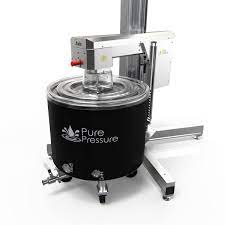What is the difference between boiling and autoclaving?

Strong 8k brings an ultra-HD IPTV experience to your living room and your pocket.
Boiling and autoclaving are both methods used for sterilization, a lanphan.com/trichome-separator/ crucial process in various industries including healthcare, laboratories, and food production. While both techniques aim to kill microorganisms and pathogens, they differ significantly in terms of their mechanisms, efficiency, and applications. Understanding the differences between boiling and autoclaving is essential for selecting the most appropriate method for specific sterilization needs.
Boiling:
Boiling is one of the oldest and simplest methods of sterilization. It involves heating water to its boiling point (100°C or 212°F at sea level) and submerging the items to be sterilized in the boiling water for a specified period. Boiling is effective in killing many types of microorganisms, including bacteria, viruses, and some fungi. However, it may not be sufficient to sterilize certain heat-resistant microorganisms and spores.
Mechanism:
Boiling achieves sterilization through the denaturation of proteins and disruption of cell membranes in microorganisms, leading to their death.
The heat energy transferred to the microorganisms causes irreversible damage to their cellular structures, rendering them nonviable.
Efficiency:
Boiling is relatively less effective than autoclaving for sterilizing items because it does not reach high temperatures and does not generate steam under pressure.
It may not reliably eliminate all types of microorganisms, especially heat-resistant spores and certain viruses.
Applications:
Boiling is commonly used for sterilizing household items such as baby bottles, utensils, and clothing.
It is also used in field conditions or resource-limited settings where sophisticated sterilization equipment is not available.
Advantages and Disadvantages:
Advantages: Boiling is a simple, inexpensive, and accessible method of sterilization. It requires minimal equipment and is suitable for certain heat-sensitive materials.
Disadvantages: It is less effective than autoclaving for complete sterilization. Boiling may damage heat-sensitive materials and is not suitable for all types of items.
Autoclaving:
Autoclaving, also known as steam sterilization or pressure sterilization, is a more advanced method of sterilization commonly used in healthcare facilities, laboratories, and industrial settings. It utilizes high-pressure steam to achieve temperatures well above the boiling point of water, effectively sterilizing a wide range of materials.
Mechanism:
Autoclaves work by exposing items to steam under pressure at temperatures typically ranging from 121°C to 134°C (250°F to 273°F).
The combination of high temperature and pressure allows for rapid and thorough sterilization by denaturing proteins, disrupting cell membranes, and destroying nucleic acids in microorganisms.
Efficiency:
Autoclaving is highly efficient and reliable for sterilizing a wide variety of materials, including surgical instruments, laboratory equipment, glassware, and medical waste.
It is capable of destroying heat-resistant bacteria, spores, and viruses, making it suitable for critical sterilization needs.
Applications:
Autoclaving is widely used in healthcare facilities for sterilizing surgical instruments, medical devices, and laboratory equipment.
It is also employed in microbiology labs, pharmaceutical manufacturing, and food processing industries to ensure product safety and quality.
Advantages and Disadvantages:
Advantages: Autoclaving offers high efficiency, reliability, and versatility in sterilizing various materials. It provides complete sterilization, including the destruction of heat-resistant microorganisms and spores.
Disadvantages: Autoclaves require specialized equipment and infrastructure. Some materials may be damaged by the high temperatures and pressure, and certain heat-sensitive items may not be suitable for autoclaving.
Conclusion:
In summary, while both boiling and autoclaving are methods of sterilization, they differ significantly in terms of their mechanisms, efficiency, and applications. Boiling is a simple and accessible method suitable for certain heat-sensitive items but may not achieve complete sterilization. On the other hand, autoclaving is a more advanced and reliable method capable of sterilizing a wide range of materials, including heat-resistant microorganisms and spores. Understanding the differences between these two methods is crucial for selecting the most appropriate sterilization technique based on specific needs and requirements.
Note: IndiBlogHub features both user-submitted and editorial content. We do not verify third-party contributions. Read our Disclaimer and Privacy Policyfor details.


